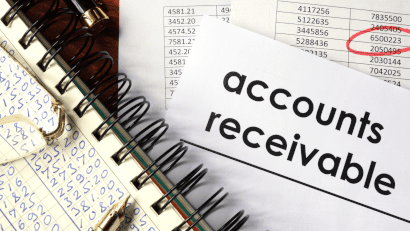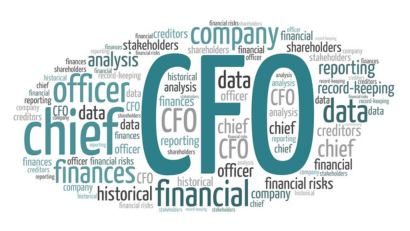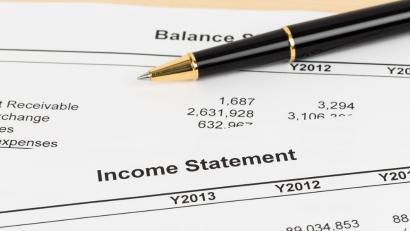Accounts receivable are amounts customers owe a company for goods sold and services provided on account (credit).
In this guide, you’ll learn:
- What is accounts receivable?
- What are the benefits of accounts receivable?
- What are the risks of accounts receivable?
- How to manage your accounts receivable?
Imagine operating a dressmaking business, and you need material for an upcoming wedding. You ask your supplier to sell you fabric on credit to make the dresses and promise to pay them back in 30 days—this is an example of how accounts receivables (credit) work.
What are the Benefits of Accounts Receivable?
Offering credit gives you a competitive edge. It can help you attract new customers who worry about purchasing from a new business. In addition, many customers may not have enough cash on hand, and offering credit might convince them to buy.
You can also establish goodwill and loyalty from your customers, allowing them to make purchases in good faith, increasing your chances for future sales and referrals from friends and family.
For example, I had a client who did web design services and expected his clients to pay him before he did any work. He was an excellent web designer and had an impressive portfolio. But he had difficulty finding new clients and didn’t understand why.
I explained to him that if he offered his customers credit (buy now, pay later), he would see an increase in sales. He took my advice and offered his clients to pay a small deposit upfront and pay the balance later. As a result, he saw his sales increase by over 50% in one week.
What are the Risks of Accounts Receivable?
The expected risk of accounts receivable is not getting paid on time (bad debt). This issue will affect the cash flow of your business. Any gaps in cash flow can leave your company without enough income to pay bills and repay debts. It’s up to you if it’s worth the risk.
How to Manage your Accounts Receivable?
To limit the risks of account receivables, you can establish better practices to help you manage your accounts receivable and see better productivity. For example, you can implement the following tips to decrease your risk of late or delinquent accounts receivables.
Multiple Payment Options
Depending on what you buy daily, you may use different payment methods each time. For one, I use cash for local purchases, but mostly use my debit card when I’m out and about in the city. When I make purchases online, I always use my credit card for the extra security it offers if something were to go wrong.
If one of my usual shopping spots were to stop accepting debit and credit cards, I might think twice about making a purchase. However, I have a friend who uses the convenience of Apple Pay, and if a business does not accept it, she will take her business elsewhere.
According to Statista, “… industry experts predict that the global number of mobile contactless payment users will grow to 760 million in 2020.” With more Americans embracing mobile payments, offering this can help your business better compete with others in your industry.
That’s why offering more than one payment option, especially mobile payments, will help your business in the long term.
Online Invoicing
As a customer, don’t you prefer to get a reminder when your cell phone or cable bill is due? Don’t you also like the convenience of paying your bills online? Well, most likely, your customers do too.
Using an online invoice service is the best investment you can make for your business. It makes invoicing automatic to create reminders for customers to know when a payment is due and late.
Online invoicing saves time and money when you can send invoices instantly and don’t have to send them through the mail. In addition, you can easily view the payment status on your accounts and see which invoices are current and who’s late.
It’s safe and allows you to provide different payment methods to your customers.
Here’s a list of popular online invoice providers:
Offer a Discount
Offering more payment options to your customers and making things convenient for them is excellent. But to be honest, customers expect that.
What if you threw something unexpected their way, like a discount for early payment? If you haven’t seen it lately, cell phone providers offer discounts when you set up auto-pay.
These companies know the importance of cash flow. So if they can get you to sign up for auto-pay, they can guarantee your payment on time. That’s why they don’t mind offering you an excellent discount for that privilege.
You can get customers to pay early by offering a discount, such as 2/10 Net 30. It means if your customer pays their invoice within ten days, you will give them a 2% discount on their balance. If they don’t pay within ten days, they will not get a discount and will pay their bill in full.
Sometimes just a little incentive can get customers to pay, which will help you avoid bad debt in the long run.
Do a Background Check
You might not think of doing a background check for a business you have known for a while. But if you will start a new business relationship and have no information on payment or financial history, you might tread dangerous waters. So, just like a bank will check a credit report and income history before offering a credit card, do the same.
Suppose you run a background check and find your new business partner is losing money and has been repeatedly late with their payments to other businesses. In that case, you might reconsider offering credit to them.
Here’s a list of popular business credit report providers:
Clear and Short Payment Terms
If you offer credit, make sure that your credit policies are clear and to the point. Highlight the penalties that a business will face if they are late with their payments. If a company faces late fees or interest, that might make them stay on top of their bills.
Also, giving more time to make a payment can cause a business to become delinquent. Offering a shorter payment term, perhaps 21 days instead of 30 days, can help get a company to pay sooner.
I had a client who offered Net 30, and I suggested changing their terms to 21 days. His customers did not know he wouldn’t mind waiting 30 days. If he shortened his payment terms, some customers might pay within 21 days.
He tried it, and some customers paid within 14 days, and others still paid within 30 days, but he did not get one payment after 30 days. It thrilled him with his increase in cash flow.
Here is a website with sample billing and payment terms to get an idea of writing your own or updating your current one.
Offering accounts receivables to future customers is an excellent idea to increase sales and bring in new customers. But it also has its downsides that you should consider and take the proper steps to minimize your risks.




